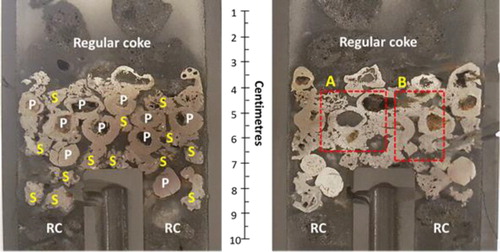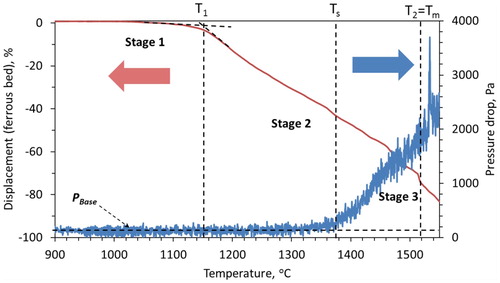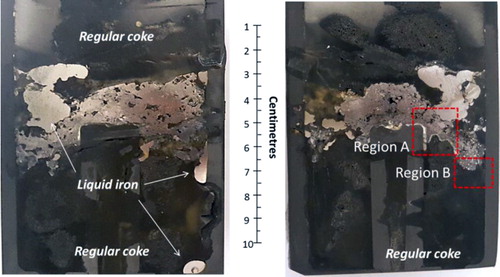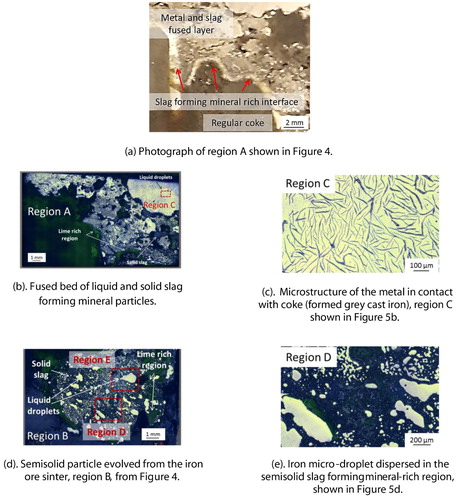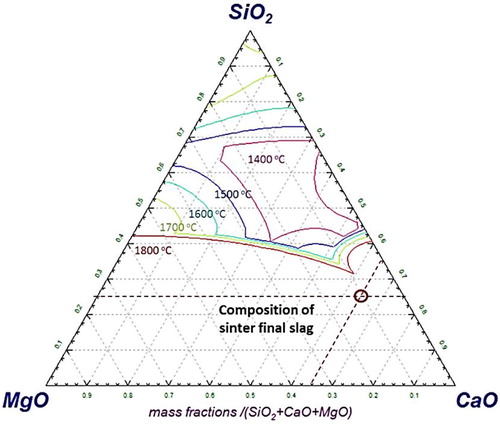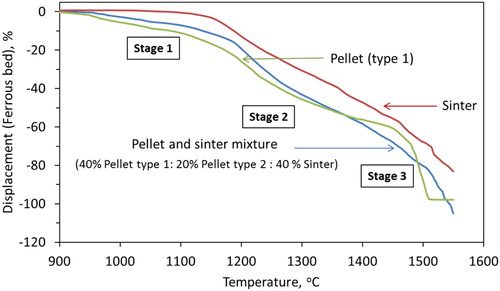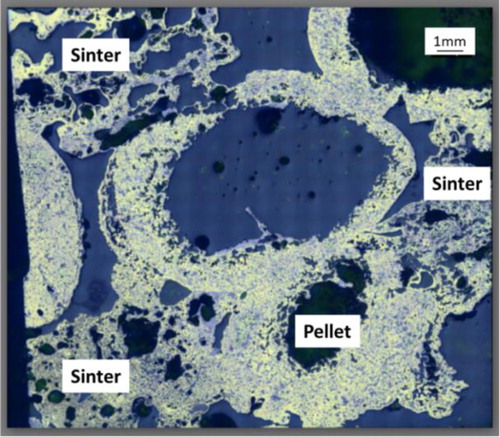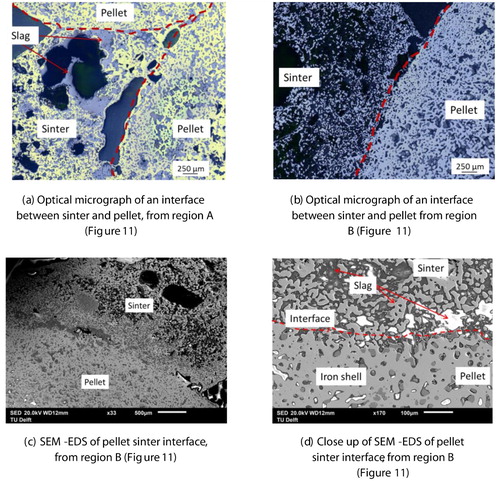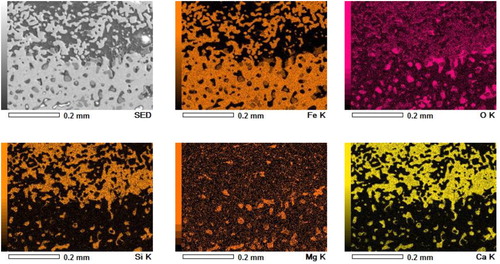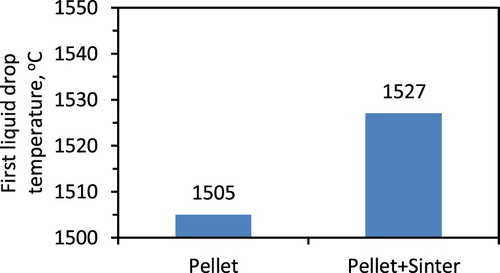Figures & data
Table 1. Chemical analysis of the ferrous raw materials (XRF).
Table 2. Thermal and gas profile followed during the experiments.
Figure 1. Characteristic behaviour of the iron ore pellet (type 1) bed under blast furnace conditions.
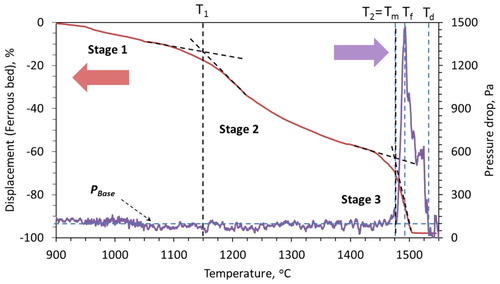
Figure 3. SiO2–CaO–FeO-(5%) MgO phase diagram with slag liquidus temperature projections (Factsage).
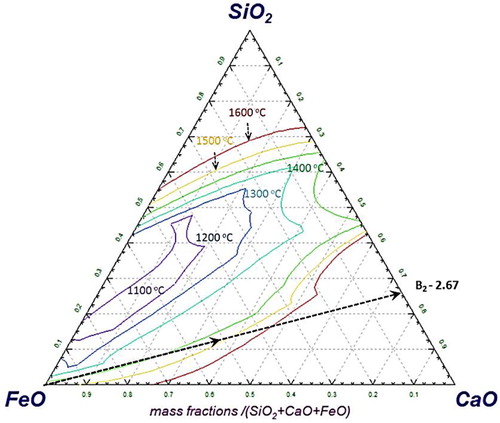
Figure 6. EDS scan of a selected region E from quenched iron ore sinter bed (). An entrapped liquid iron droplet present inside the bed.
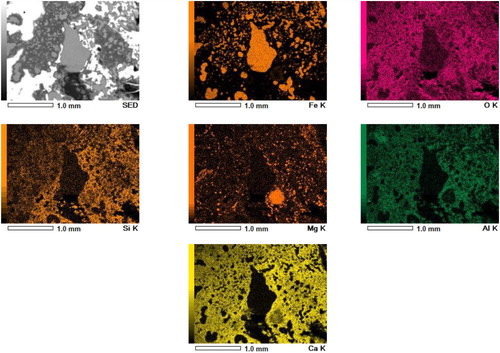
Figure 9. Measured profile of pressure drop for ferrous raw materials bed under simulated blast furnace conditions.

Figure 10. Measured S-value for different burden type (S-value; a measure of resistance to the gas flow during softening and melting of the ferrous burden).
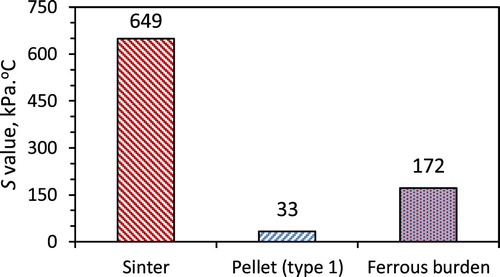
Figure 11. Two halves of the ferrous burden (pellet and sinter mixture) quenched at 1505°C (P-Pellet, S-Sinter, RC- Regular coke).
